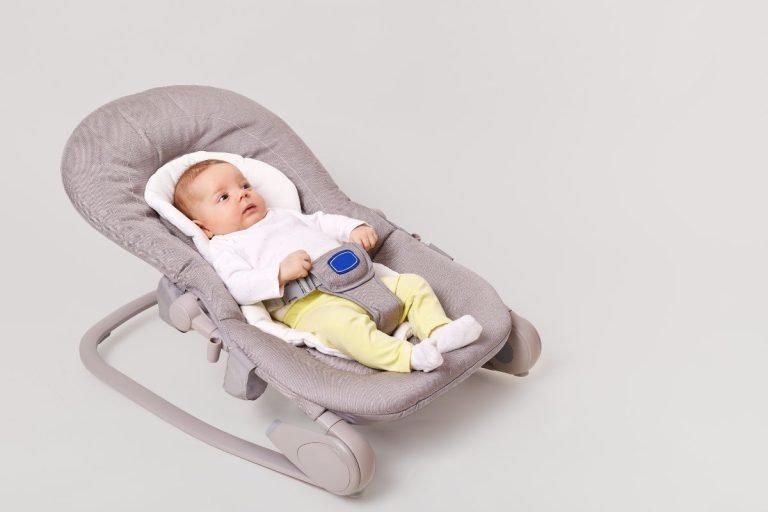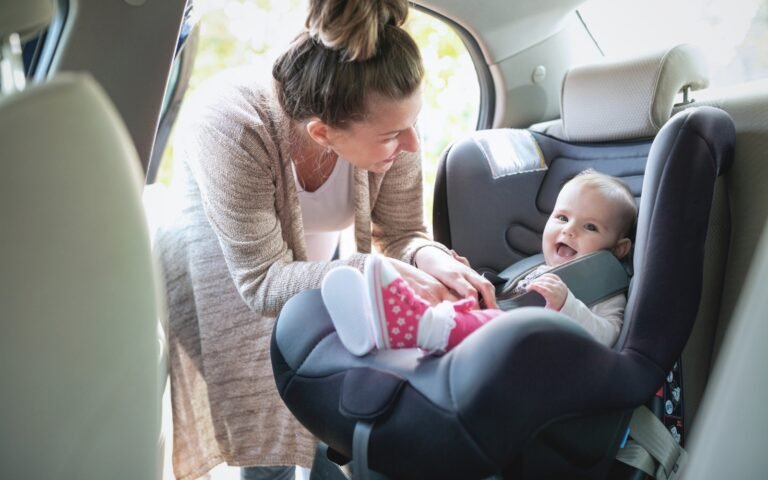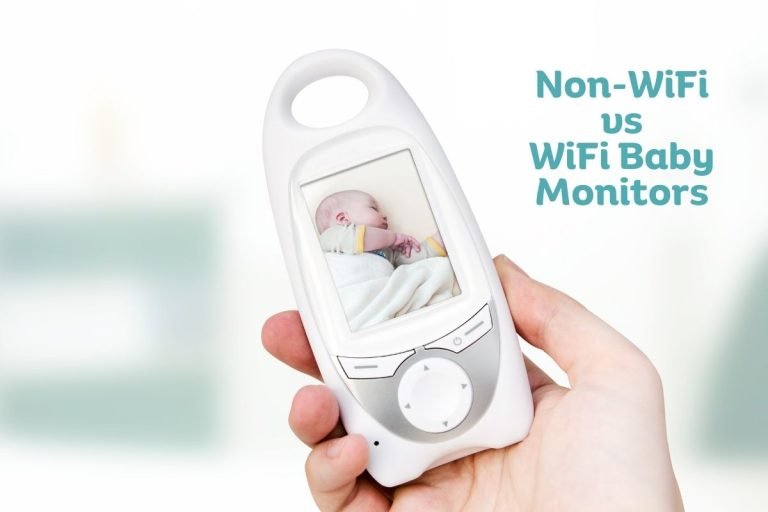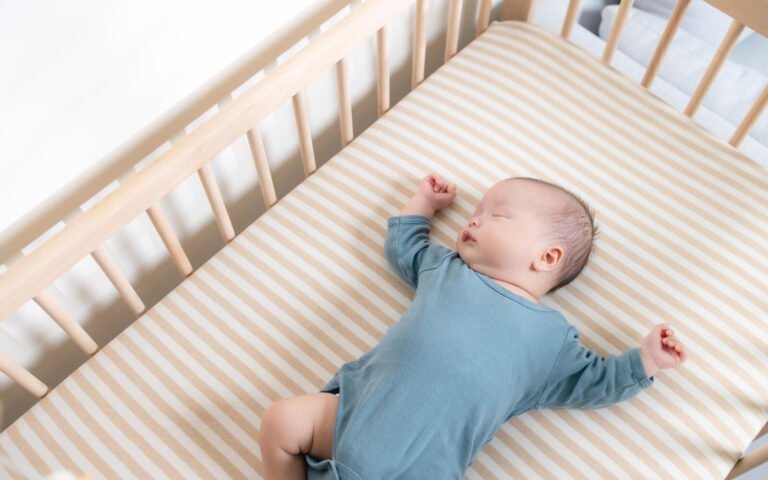Baby Walker Vs Bouncer or Jumper 2025: Which Is Better for Your Baby?
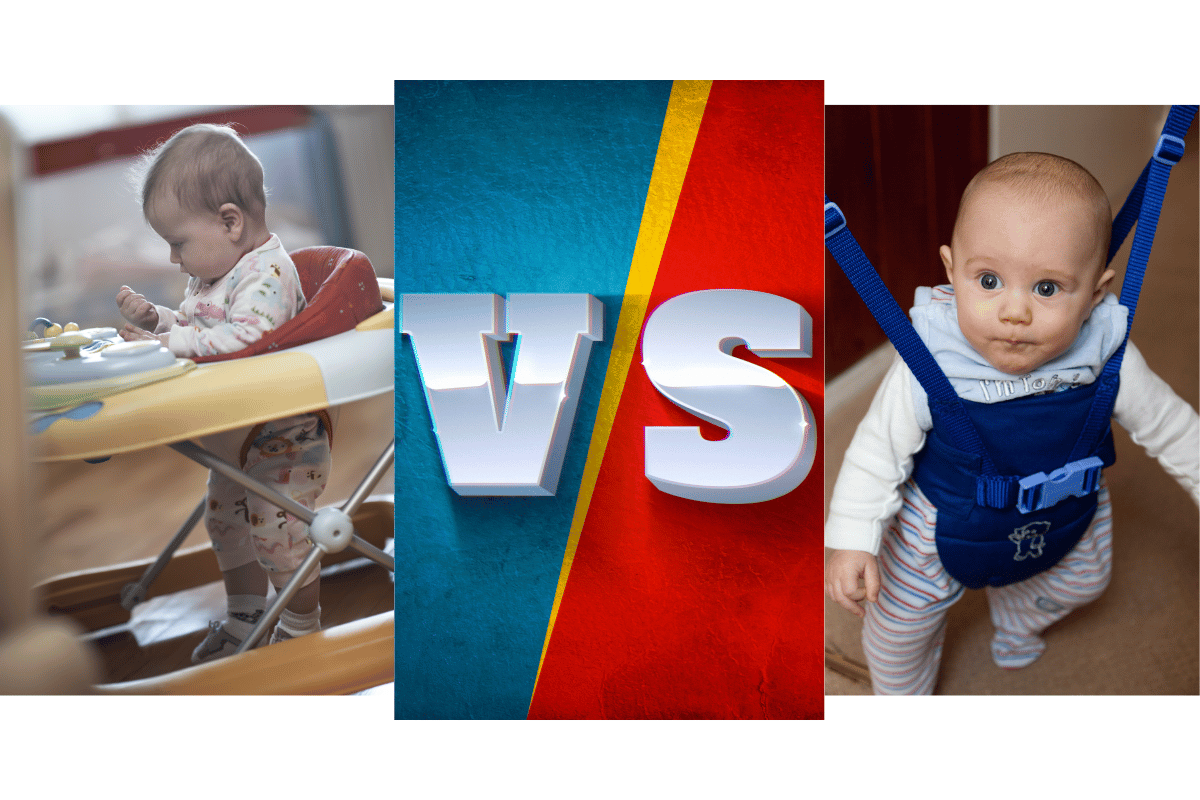
Imagine your little ones taking their first steps, exploring the world around them with wonder and curiosity. As a parent, you want to provide them with the best tools to support their development and keep them safe.
But when choosing between a baby walker and a jumper?
In this discussion, we will delve into the pros and cons of Baby Walker Vs Bouncer, considering factors such as safety, impact on development, and appropriate usage.
By the end, you’ll have a clearer understanding of which option may best fit your baby’s needs.
Key Takeaways – Baby Walker Vs Bouncer
- Baby walkers and jumpers have different benefits: walkers promote mobility and fine motor skills, while jumpers strengthen leg muscles and provide hands-free time for parents.
- Experts do not consider walkers safe due to concerns about delayed walking and poor balance.
- Jumpers should be appropriate for the baby’s age and weight to ensure safety.
- Supervision is essential to prevent accidents and falls when using walkers and jumpers, and babies should not spend more than 20-30 minutes at a time on these devices.
Overview of Walkers vs. Bouncer/Jumper
When deciding between a baby walker and a jumper, it’s important to understand the key differences and benefits of each.
Baby walkers are toys that sit, support, and push your baby as they learn to walk. They usually have a seat in the center and wheels on the bottom, allowing your little one to move around safely, standing and supported .Need advice? Learn how to Choose a Baby Walker effectively.
On the other hand, baby jumpers attach to a doorway and allow your baby to bounce up and down. They provide entertainment and help children develop their leg muscles .Explore detailed Baby Walker Safety Tips to ensure your child’s well-being.
Both baby walkers and jumpers have their benefits and considerations.
Baby walkers, for example, can help strengthen your baby’s leg muscles and promote weight bearing, which is essential for their development. Additionally, they can enhance your baby’s fine motor skills as they reach for toys or push buttons on the walker. Not sure which to pick? Check out the Best Baby Walkers available.
However, it’s important to note that some developmental concerns have been associated with baby walkers, such as delayed walking and poor balance.
On the other hand, baby jumpers can provide a fun and interactive way for your baby to exercise their leg muscles and improve their coordination. They also allow for some hands-free time for parents. However, ensuring your baby is securely attached to the jumper and supervised is important to prevent accidents. For a more active approach, consider Baby Walker Exercises that promote safe and healthy mobility.
Which is better for the baby’s development and safety

Consider the specific needs and abilities to determine the best option for your baby’s development and safety. Both baby walkers and baby jumpers have their advantages and the risks involved.
Baby walkers can provide mobility and entertainment for your baby. They allow them to move around and explore their surroundings. However, it’s important to note that many experts don’t consider baby walkers safe.
There have been incidents where babies have fallen down stairs or suffered injuries from tipping over. It’s crucial to closely supervise your baby using a walker and ensure they’re always on a flat and safe surface.
On the other hand, baby jumpers can also benefit your baby’s development. They provide a fun and interactive way for your baby to strengthen their leg muscles and improve coordination.
Jumpers allow babies to bounce and learn cause-and-effect relationships. However, it’s important to use a jumper appropriate for your baby’s age and weight and to follow the manufacturer’s instructions for safe usage.
Choosing between a baby walker and a baby jumper depends on your baby’s needs and abilities. Always prioritize their safety and development by choosing a walker or jumper that’s safe and suitable for them.
Defining Baby Walkers and Jumpers/Bouncer
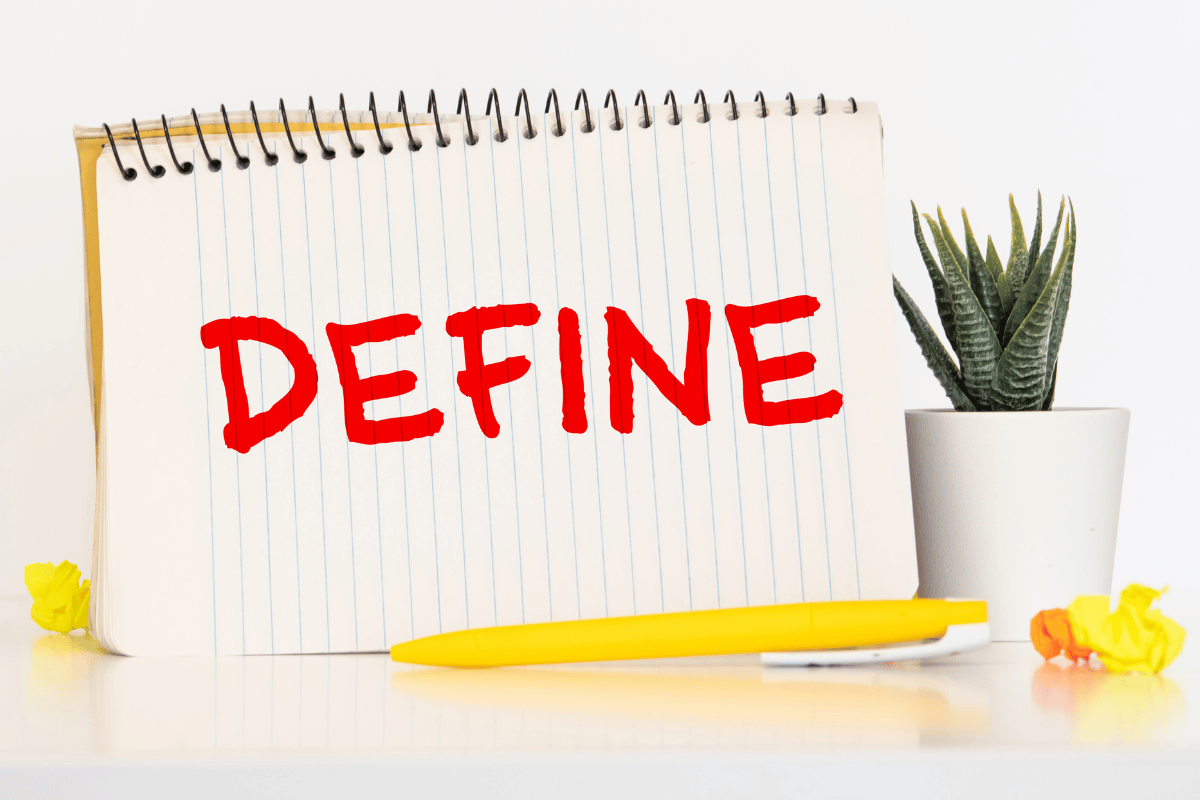
Let’s start by defining baby walkers and baby jumpers.
Baby walkers allow babies to move around using their feet and legs, supported by a walking frame.
On the other hand, baby jumpers are suspended seats that allow babies to bounce, sit, stand, and jump using their legs.
Understanding the characteristics and functions of these two items is essential to evaluate their benefits and drawbacks for your baby’s development and safety.
What are Baby Walkers?
Baby walkers and jumpers, also known as activity centers, are popular baby gear designed to entertain and engage babies while they walk and explore their surroundings.
A baby walker is a device that allows a baby to sit in the top position on an elevated seat supported by a frame with wheels. This top position enables the baby to move around using their feet while surrounded by a tray or activity center with toys and other interactive features.
On the other hand, baby jumpers are suspended seats allowing the child or baby to bounce up and down, using their legs and feet to propel themselves.
Both walkers and jumpers are intended for babies who can already sit up unassisted, usually around the earlier age of 4 to 6 months. However, it’s important to note that walkers can be more dangerous as they give babies access to potentially hazardous areas and dangerous objects.
What are Baby Jumpers/Bouncers?
Regarding baby gear, one popular option for entertaining and engaging babies while standing as they learn to walk and explore is the baby jumper. Unlike baby walkers, which allow babies to move their legs around seated, baby jumpers keep babies upright. This helps strengthen their leg muscles and prepares them for walking.
Baby jumpers typically feature a seat with a harness or straps to secure the baby, and they usually have a tray with toys attached to keep the baby entertained. The jumper’s design and upright position encourage external rotation of the infant’s hips, which is important for proper hip development.
Many babies enjoy the bouncing motion of the jumper and the opportunity to play with the toys within their reach.
Safety Considerations
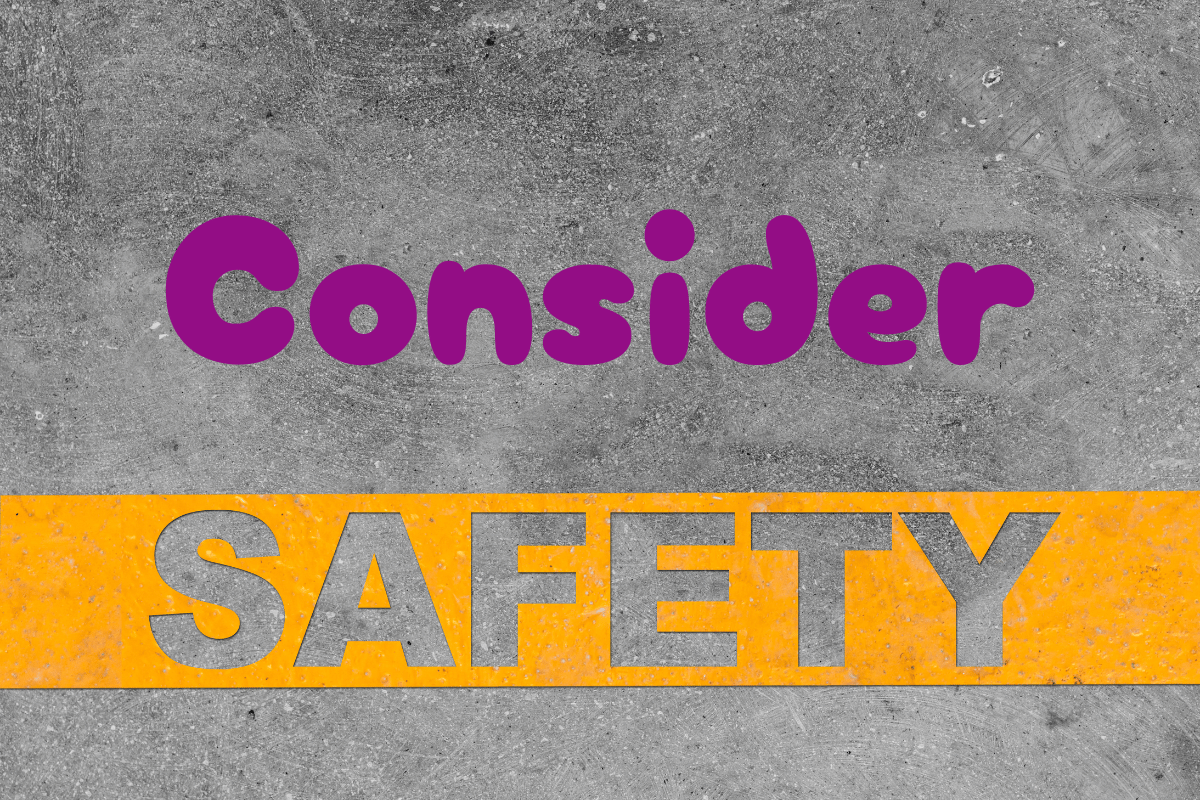
Regarding the safety considerations of baby walkers and jumpers, it’s important to be aware of the hazards associated with walkers, such as the risk of falls and accidents.
On the other hand, baby jumpers offer safety advantages by keeping your baby securely in place and reducing the risk of falling.
Understanding these safety factors is crucial in making the best choice for your baby’s well-being.
Hazards of Baby Walkers
There are some important safety considerations to remember when keeping baby walkers safe.
Firstly, these devices can increase the risk of accidents, such as falls down stairs or collisions with furniture.
Additionally, studies have shown that baby walkers may delay a baby’s motor development.
Awareness of these hazards and prioritizing your baby’s safety and development is crucial.
Increased Risk of Accidents
Using a baby walker can significantly increase the risk of accidents for your little one. While these devices may seem convenient to keep your baby entertained and help them move around, they can be dangerous.
Babies in walkers have a higher chance of falling down stairs, getting their toes trapped in the wheels, or even tipping over. Parents must be aware of these risks and consider safer alternatives like jumpers.
Delayed Motor Development
Babies who use walkers may experience delayed motor development due to the hazards associated with these devices. Research has shown that using a baby walker can hinder a baby’s natural progression in motor skills. These walkers restrict the baby’s movement and limit their ability to develop balance and coordination.
In contrast, jumpers allow babies to move and jump freely, promoting the development of their motor skills. It’s important to consider these factors when deciding between a baby walker and a jumper for your baby’s motor development.
Safety Advantages of Baby Jumpers/Bouncers
To ensure your baby’s safety, it’s important to consider the advantages that baby jumpers offer.
Unlike baby walkers, which can potentially hinder their motor development, baby jumpers provide a safe and secure environment for your little one to explore their mobility.
Baby jumpers have built-in safety features such as adjustable heights, secure straps, and sturdy frames, ensuring your baby remains stable while jumping. This helps to strengthen their leg muscles, improve balance, and enhance coordination.
Additionally, baby jumpers are designed to prevent falls by providing a supportive seat and a secure harness. Using a baby jumper allows your baby to move and explore while keeping them safe from potential accidents and injuries.
Impact on Baby’s Development

Regarding the impact on your baby’s development, baby walkers and jumpers offer unique benefits.
Baby walkers can help develop physical skills, such as leg strength and coordination, as your baby learns to move around.
On the other hand, jumpers provide cognitive benefits by promoting hand-eye coordination and spatial awareness.
Understanding these different aspects can help you decide which option may be better suited for your baby’s development.
Physical Skills Gained From Walkers vs. Jumpers/Bouncers
A baby walker or a jumper can provide valuable physical skills contributing to your baby’s overall development. Walkers can help your child or baby learn how to walk by allowing them to push themselves forward using their feet. This promotes the development of leg muscles and improves balance. Walkers also provide a sense of independence as your baby can explore their surroundings while being supported.
On the other hand, jumpers focus more on developing leg strength and coordination. They allow your baby to engage in jumping motions, which helps improve their gross motor skills. Jumpers also provide a fun and interactive way for your baby to exercise and strengthen their leg muscles.
Both walkers and jumpers can play a role in your baby’s physical development, so choosing the one that suits your baby’s needs and preferences is important.
Cognitive Benefits of Walkers and Jumpers/Bouncers
After gaining physical skills from using either a baby walker or a jumper, let’s explore the cognitive benefits of walking toys and their impact on your baby’s development.
Both walkers and jumpers allow your little one to reach things and engage in play. With their wheels, walkers allow children to move around and explore their space and surroundings, promoting spatial awareness and problem-solving skills. Using a walker, your baby can navigate their environment and discover new objects, fostering curiosity and cognitive development.
On the other hand, jumpers offer support and promote muscle development, enhancing coordination and motor skills. This increased physical ability can positively impact your baby’s cognitive development by allowing them to engage more actively in their play and exploration.
Appropriate Ages and Usage
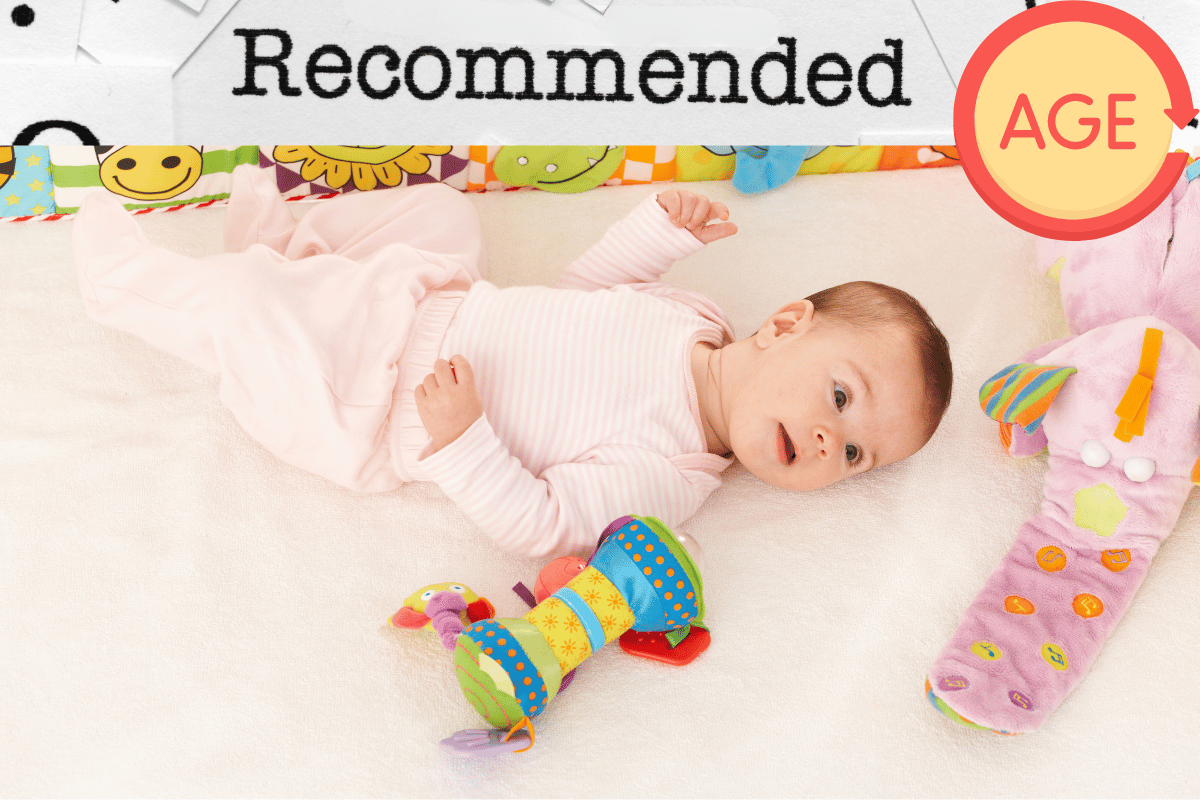
Now, let’s discuss the appropriate child ages and usage of baby walkers and jumpers.
It’s important to note the minimum and maximum recommended ages for each.
Additionally, there’s a maximum time that babies should spend using these devices to ensure their safety and development.
Minimum and Maximum Recommended Ages
Parents should consider the minimum and maximum recommended ages for using a baby walker or jumper to ensure their child’s safety and development.
Regarding baby walkers, waiting until your baby is around 6-8 months old and can sit up independently is generally recommended. This is because infant walkers allow babies to move around before they’ve developed the necessary muscle strength and coordination, which can increase the infant’s risk of falling and injuries.
On the other hand, jumpers are typically safe to use once your baby can hold their head up independently, usually around four months old. Jumpers provide a secure environment for babies to explore their movements and develop leg strength. However, it’s always essential to supervise your baby using a jumper to prevent accidents or falls.
Maximum Time Babies Should Use Each
To ensure safety and appropriate usage, it’s important to consider the maximum time babies should use each baby walker or jumper. Research shows babies shouldn’t spend more than 20-30 minutes in a baby walker or jumper.
It’s crucial to remember that these devices aren’t meant to replace supervised playtime or regular movement. Babies need ample time and space to explore their environment, practice crawling, and develop balance and coordination.
Excessive time in a baby walker or jumper can hinder their natural development, as it may delay them from learning important milestones such as walking and standing.
Using these devices sparingly and in moderation is recommended to allow babies to develop their gross motor skills and take their first steps independently.
Final Recommendation
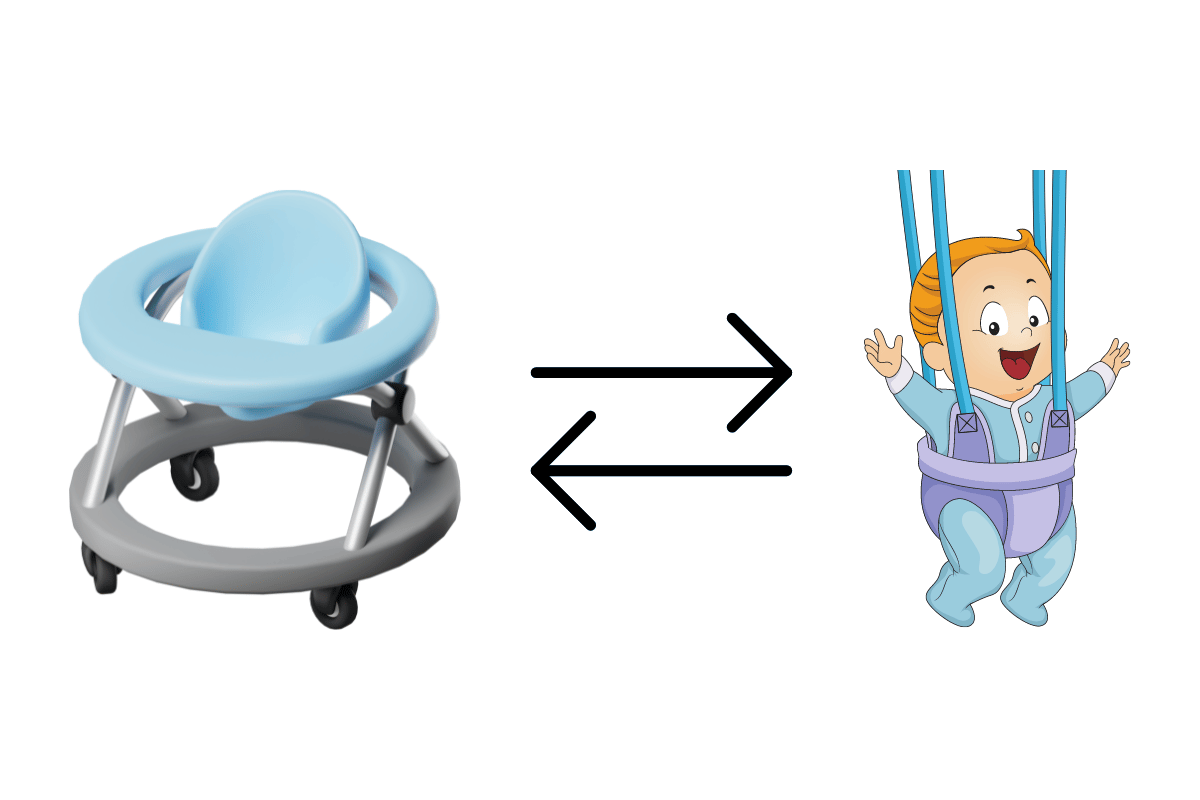
So, after considering the pros and cons of both baby walkers and jumpers, it’s time to make a final recommendation.
Choosing a baby jumper for your little one is recommended based on safety and development.
Baby jumpers provide a safe and fun way for babies to strengthen their muscles and develop coordination skills while also minimizing the risk of accidents associated with baby walkers.
Summary of Key Pros and Cons of Both Products
When considering baby walkers’ and jumpers’ benefits and drawbacks, weighing each product’s advantages and disadvantages is essential.
Baby walkers support your little one in sitting, standing, and walking, promoting early motor skills development. They offer freedom and exploration as your baby moves around the room.
However, walkers can limit the natural development of walking as they provide excessive support, which may delay independent walking.
On the other hand, jumpers allow babies to bounce and jump, strengthening their leg muscles and promoting coordination. They offer a fun and interactive way for babies to engage in physical activity.
However, jumpers don’t provide the same freedom and mobility as walkers.
Choosing between a baby walker and a jumper depends on your baby’s needs and developmental stage.
Conclusion on Which is Better For Baby Based on Safety and Development
Based on the considerations of safety and development, it’s important to make an informed choice between a baby walker and a jumper for your little one.
When it comes to safety, both the baby walker and jumper have their pros and cons. While the walker provides mobility, it poses a risk of accidents and falls. On the other hand, the jumper offers a secure and supportive environment for your baby to bounce and play.
Regarding movement development, the jumper promotes leg strength and coordination, while the walker encourages walking skills.
Ultimately, the better choice for your baby depends on their needs and abilities. It’s recommended to prioritize safety by closely supervising your baby and ensuring that the chosen product meets safety standards.
Additionally, it’s important to provide various play experiences to support their overall development.
Top Product Picks

Now, let’s talk about the best baby jumper and baby walker products on the market.
Which one is right for your little one?
We’ll explore the top picks in each category to help you make an informed decision.
Best Baby Jumper Product
If you’re looking for the best baby jumper product, consider these top picks for your little one’s endless bouncing and jumping fun.
The first product on our list is the Fisher-Price Rainforest Jumperoo. This baby jumper is designed to entertain your infant with its colorful rainforest theme and interactive toys. It also has a 360-degree rotating seat that allows your baby to explore their surroundings.
Another great option is the Evenflo Exersaucer Jump and Learn Jump. This jumper not only provides a safe jumping experience, but it also features activities that promote the development of motor skills.
Lastly, the Baby Einstein Neptune’s Ocean Discovery Jumper is perfect for curious babies who love exploring. Its ocean-themed toys and adjustable height will keep your little one happily jumping and learning.
These baby jumpers are a great way to strengthen your baby’s legs and give them hours of jumping fun.
Best Baby Walker Product
When choosing the best baby walker product for your little one, consider these top picks that provide safety and entertainment.
The Fisher-Price Learn with Me Zebra Walker is among the best baby walkers. This walker features a sturdy design with a wide base for stability. It also has colorful lights, music, and fun activities to keep your baby engaged while they learn to walk.
Another great option is the Joovy Spoon Walker, which has a sleek and modern design. It offers enough space and a large tray for snacks and toys, and its height can be adjusted to accommodate your growing baby.
Lastly, the Bright Starts 3 Ways to Play Walker is a versatile option for a walker, bouncer, or stationary activity center. It comes with interactive toys and a removable electronic toy tray.
These top baby walker products offer your little one safety, entertainment, and developmental benefits.
Summary
When choosing between a baby walker and a jumper for your little one, it’s important to prioritize their safety and development.
While both options have benefits, a baby jumper allows for more freedom of movement and encourages leg strength, coordination, and balance.
However, monitoring your baby’s usage and following safety guidelines closely is crucial.
Ultimately, the decision should be based on your baby’s needs and preferences.
Frequently Asked Questions
Are Baby Walkers and Jumpers Safe for All Babies?
Yes, baby walkers and jumpers can be safe for most babies. However, it’s important to consider your baby’s development and safety guidelines when choosing between them. Always supervise your baby during use.
Can Using a Baby Walker or Jumper Delay a Baby’s Ability to Walk Independently?
Using a baby walker or jumper can delay your baby’s ability to walk independently. It is important to consult with your pediatrician and consider the risks and benefits before introducing these devices.
How Much Time Should a Baby Spend in a Walker or Jumper Each Day?
You should limit your baby’s time in a walker or jumper to less daily. Aiming for no more than 20 minutes at a time is recommended to avoid potential delays in their ability to walk independently.
Are There Any Specific Safety Precautions to Take When Using a Baby Walker or Jumper?
Taking specific safety precautions is important when using a baby walker or jumper. Make sure the equipment is properly assembled, keep a close eye on your baby, and ensure they are using it in a safe environment.
Can Using a Baby Walker or Jumper Have Any Negative Effects on a Baby’s Physical Development?
Using a baby walker or jumper can negatively affect your baby’s physical development. It is important to consider the safety precautions and consult with your pediatrician before using either.

